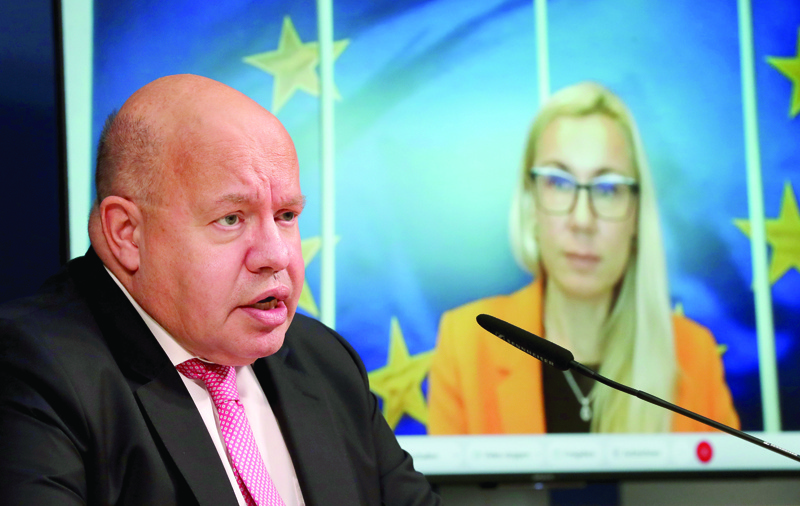
BERLIN: German industrial output edged down in August following three months of relatively strong increases, suggesting the recovery in Europe's largest economy from the coronavirus shock is starting to lose steam. Industrial output fell by 0.2 percent on the month after an upwardly revised rise of 1.4 percent in July and a jump of 9.3 percent in June, figures released by the Federal Statistics Office yesterday showed. A Reuters poll had forecast an increase of 1.5 percent for August.
Factories churned out fewer capital goods and consumer goods, with the slump particularly deep in vehicle production. "At least a part of the fall in car output was due to more companies implementing their summer shutdowns in August this year," Andrew Kenningham from Capital Economics said. This one-off effect coupled with rising orders and upbeat sentiment surveys could suggest that industrial output will rise again in coming months, albeit at a probably slower pace.
The economy ministry said industrial output now stood at almost 90 percent of pre-crisis levels in the fourth quarter of 2019. "Since the easing of lockdown measures in April, there has been an ongoing recovery since May, even if there was a slight decline in August," the ministry said. The catch-up process is likely to continue in light of improved business sentiment, rising orders and a decline in the use of job protection schemes among manufacturers, it added.
The German economy contracted by a record 9.7 percent in the second quarter as household spending, company investments and trade collapsed at the height of the pandemic. However, surprisingly strong retail sales and higher-than-expected industrial orders so far had suggested a relatively robust recovery over the summer months. The Ifo institute expects 6.6 percent output growth in the third quarter and a slowdown to 2.8 percent in the fourth quarter.
The government forecast the economy to shrink by a calendar-adjusted 6.1 percent this year and to grow by 4.4 percent next year. This means output will not reach pre-crisis levels before 2022. Berlin has unleashed an unprecedented array of rescue and stimulus measures to help companies and consumers recover as quickly as possible from Germany's deepest recession on record. The packages include unlimited liquidity aid for struggling companies, a massive job protection scheme to shield workers from sudden unemployment as well as cash handouts for parents and a temporary value added tax cut to boost domestic demand.
The price for benchmark German debt increased yesterday after German industrial output unexpectedly slipped in August, suggesting the recovery in Europe's largest economy from the coronavirus shock could be weaker than hoped. German 10-year yields fell 1.6 basis points to -0.52 percent after inching to a two-week high on Tuesday.
The day before, the gap between German and US 10-year yields widened to its largest since March as US yields rose. They gave back those gains after President Donald Trump on Tuesday abruptly cancelled talks in Washington over coronavirus aid. For the Italian 10-year government bond, the yield fell to its lowest in more than a year at 0.765 percent as traders expected more monetary policy stimulus from eurozone's central bank. It last traded down 1.6 bps. On Friday, the Italian 10-year BTP yield fell to a record low of 0.751 percent, Tradeweb said. "People think it's a little bit of a one-way bet on more stimulus being required from the ECB," said Lyn Graham-Taylor, fixed income strategist at Rabobank.
On Tuesday, dovish comments from the European Central Bank chief raised expectations for further stimulus. If the euro strengthened, that would increase the likelihood of ECB easing, Graham-Taylor said. "If the dollar is stronger, it is probably due to some risk-off factors and this is probably also going to encourage the ECB to have to do more easing," he added. Traders await minutes from the Federal Reserve to be released later in the day.
ING analysts said they did not expect the minutes "to be an existential threat to the reflation trade taking hold in dollar rates markets." Still, forward Fed Fund rates price in the first full hike only by the middle of 2024, which is slightly more hawkish than before the announcement of the average inflation target, ING said. "This move higher in expected policy rates could accelerate should the minutes highlight that the Fed has merely given itself the option, rather than given a hard commitment, not to raise rates preventively." - Reuters










